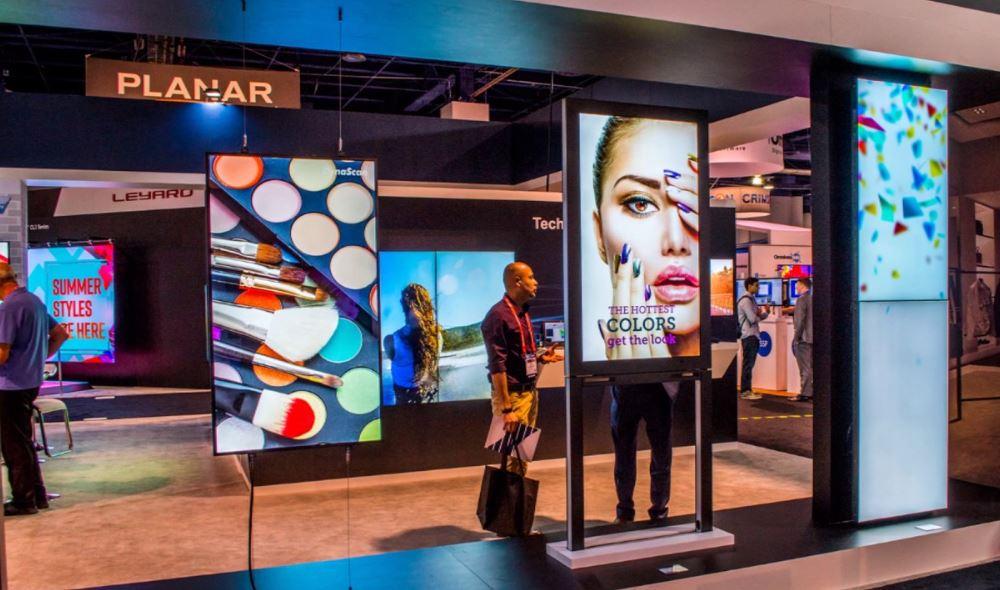Exploring the Impact of Digital Screens on Consumer Behavior

Introduction
In today's rapidly advancing digital age, the influence of digital screens on consumer behavior is profound and ever-growing. As screens become more embedded in our daily lives, understanding their impact on consumer decisions is crucial for businesses and marketers aiming to stay ahead in a competitive market.
The Ubiquity of Digital Screens
Digital signs are omnipresent, from smartphones and tablets to laptops and digital billboards. This constant exposure has significantly altered how consumers perceive and interact with brands. The pervasiveness of digital screens ensures that consumers are continually bombarded with advertisements, product information, and brand messages, influencing their purchasing behavior in unprecedented ways.
The Role of Smartphones in Consumer Decisions
Smartphones, being the most personal and frequently used devices, play a pivotal role in shaping consumer behavior. The ease of access to information and the ability to make purchases on the go have transformed the traditional shopping experience. Consumers now rely heavily on their smartphones to compare prices, read reviews, and seek recommendations before making a purchase. This shift necessitates that businesses optimize their websites and content for mobile devices to capture and retain consumer interest effectively.
Social Media Influence
Social media platforms, viewed primarily through digital screens, are powerful tools for shaping consumer perceptions and behaviors. Platforms like Facebook, Instagram, and Twitter enable brands to engage directly with consumers, fostering a sense of community and loyalty. Influencer marketing, where individuals with significant social media followings endorse products, has become a critical strategy. This direct line of communication and endorsement can significantly impact purchasing decisions and brand loyalty.
The Psychology Behind Screen Influence
Digital screens influence consumer behavior not just through accessibility but also through psychological mechanisms. The visual and interactive nature of screens captivates attention and can create more memorable and engaging brand experiences.
Visual Appeal and Consumer Engagement
The human brain processes visuals faster than text, making the visual appeal of digital content paramount. High-quality images, videos, and interactive content can enhance user engagement and retention, leading to higher conversion rates. Brands that invest in visually appealing and interactive content are more likely to capture and hold consumer attention, driving them towards making a purchase.
Instant Gratification and Impulse Buying
The digital age has cultivated a culture of instant gratification, where consumers expect immediate access to products and services. This expectation has fueled the rise of e-commerce platforms that offer swift delivery options. Moreover, the ease of online shopping via digital screens has led to an increase in impulse buying. The ability to make purchases with just a few clicks can lead to spontaneous decisions, driven by attractive visuals and persuasive marketing tactics.
Digital Screens and Consumer Trust
Consumer trust is a critical component of purchasing behavior, and digital screens play a significant role in building or eroding this trust.
Online Reviews and Testimonials
Digital screens facilitate the sharing and reading of online reviews and testimonials, which have become crucial in the decision-making process. Consumers often rely on peer reviews to gauge the quality and reliability of a product or service. Positive reviews can build trust and credibility, while negative reviews can deter potential customers. Therefore, managing online reputation and encouraging satisfied customers to leave positive reviews is essential for businesses.
Transparency and Authenticity
The digital era has heightened consumer demand for transparency and authenticity. Brands that communicate openly and honestly via digital screens can build stronger relationships with their audience. Providing detailed product information, responding to customer inquiries promptly, and addressing concerns transparently can foster a sense of trust and loyalty among consumers.
The Future of Digital Screens and Consumer Behavior
As technology continues to evolve, so too will the impact of digital screens on consumer behavior. Emerging technologies like augmented reality (AR) and virtual reality (VR) are set to revolutionize how consumers interact with digital content. These technologies offer immersive experiences that can simulate real-life interactions with products, providing a deeper understanding and connection.
Personalization and AI Integration
The integration of artificial intelligence (AI) with digital screens is another trend that will shape future consumer behavior. AI can analyze consumer data to deliver personalized content and recommendations, enhancing the shopping experience. Personalized marketing strategies, powered by AI, can significantly increase engagement and conversion rates by catering to individual preferences and behaviors.
Sustainability and Ethical Considerations
With growing awareness of environmental and ethical issues, consumers are becoming more conscientious about their purchasing decisions. Digital screens can play a role in promoting sustainable practices and ethical brands. Providing information about a brand's sustainability efforts and ethical practices through digital channels can influence consumer choices positively.
Conclusion
The impact of digital screens on consumer behavior is multifaceted and far-reaching. From the ubiquitous presence of smartphones to the influential power of social media, digital screens have transformed how consumers make decisions and interact with brands. Understanding the psychological and trust-building aspects of screen influence, along with staying ahead of technological advancements, is crucial for businesses aiming to thrive in this digital age.

- Art
- Causes
- Best Offers
- Crafts
- Dance
- Drinks
- Film
- Fitness
- Food
- Giochi
- Festival
- Gardening
- Health
- Home
- Literature
- Music
- Networking
- Altre informazioni
- Party
- Religion
- Shopping
- Sports
- Theater
- Wellness



